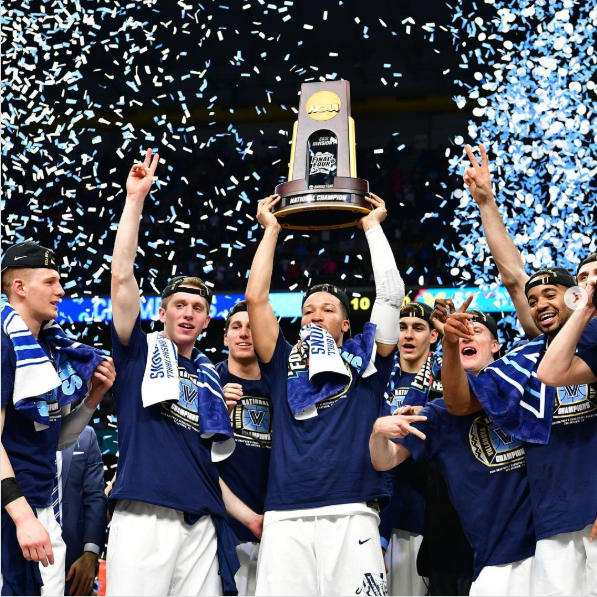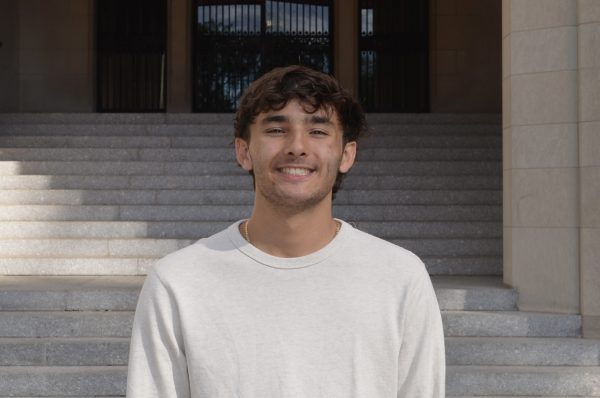Let me get this out of the way before I go on to imply it far too much: I grew up a Villanova University basketball fan. And I know it is easy for me to complain about the state of college basketball when the state of my childhood favorite team is something unspeakable at the moment. Our head coach says, “It is what it is,” when asked about our embarrassing losses. Our leading players are missing easy shots. Our promising recruits are disappointing for another year in a row. It’s a mess out there. But as a fan, this also means every week, I reminisce about the Golden Age that was our 2017-18 season. Jalen Brunson, Mikal Bridges, Eric Paschall, Phil Booth, Donte DiVincenzo, Omari Spellman and coach Jay Wright all at once… what a time. And without (too much) bias, I mean to say — what a time and Golden Age for all of college basketball.
Nova fan or not, it was hard to deny the quality of their 2017-18 team. And remarkably, teams alongside and seasons before them stood out just as glaringly. The University of Kentucky had an incredible season in 2011-12 (going 38-2), and despite their repeated greatness in 2014-15 (38-1), the skilled Blue Devils of Duke University took home the season’s national championship. These three programs (not meaning to forget the additionally excellent University of North Carolina, University of Wisconsin and University of Louisville teams) best reflect their era’s amount of greatness.
Now you watch the best teams — 2023 and 2024 national title winner University of Connecticut being the most obvious, along with the University of Kansas and the University of Alabama, ranked number one and two this year by ESPN — and the game is different. While UConn’s average points per tournament game in 2023 was higher than that of Nova’s in 2018, when someone questioned who would win in a tournament matchup on X,formally known as Twitter, New York Knick and previous Villanova Wildcat Josh Hart tweeted, “[2018 Nova] would win by 30.” It’s a biased argument… but a fair one. While UConn has been blowing teams out during March Madness, their path to the championship, particularly in 2023, was filled with upsets that partly cleared it. But aside from luck in the tournament, there is still an argument on whether the current best teams could beat the best of a couple of years ago. And I side with Hart on this one.
The extensive amount of talent seen in all areas of the court has been somewhat lost, prominently due to players’ premature thirst for the pro league. Of course, this has always been a part of college sports. However, NCAA basketball has recently become driven by players’ NBA defections. Jalen Brunson was good enough to leave Villanova by his third season. Same with Grayson Allen at Duke. However, they both claimed they prioritized the process and support that college ball lent them. This NBA season, 73 players are under the age of 21. In the 2017-2018 season, 48 were, and in 2014-2015, 31. It is no secret that loyalty to players’ college teams steadily decreases as the NBA begins to draft more of them young. As a result, more underdeveloped rookies and other not-exactly-NBA-material players primarily constitute college teams. Most of UConn’s starting lineup comprises shining freshmen and sophomores or older senior and fifth-year players. The team just lost Stephon Castle and Donovan Clingan to the NBA after one and two seasons, respectively. The same applies to Alabama, who lost star players Brandon Miller and Noah Clowney in 2023 after one year of play. Of course, programs are still recruiting great players, but many of them are leaving for the pros before their teams can adapt to them.
Similarly, turnover in the transfer portal has led to a lack of cohesion in the game. As of 2021, a new rule allows for athletes to compete immediately after transferring rather than sitting out for a season. Due to this, transfer rates have increased exponentially (doubling over the past six years). As coaches now try to quickly improve their rosters and players try to find better opportunities, it calls for drastic adjustments necessary for teams’ cohesion. It has led to some rocky seasons, as seen already this year with teams like the University of Arkansas, with six new transfers on their roster.
College players are by no means getting worse. But the matter of teams is a different story. As players go pro or transfer so often, teams can’t possibly show the type of unity they have in the recent past. Therein lies a question of whether current programs dominating others could have done the same to the shining teams we saw a few years ago, or if they would have just been another lost in the pool of greatness. Some argue they could. We’ll never really know. But, if you asked me, you could always put them against the Nova Knicks and see what happens.




































































































































































































